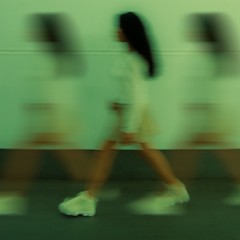Shaggy
我知道这不是Reggae的辉煌年代,Bob Marley早已不在,但他的拥趸仍在寻找着新的节拍,Shaggy是他们最新的热爱。Shaggy的最新专辑《Hot shot》已连续24周进入公告牌(Billboard)专辑排行榜前100位,曾取得排行榜榜首的佳绩,而他的成功从1993年就已开始,持续了8年的胜利。单从名字上来看,Shaggy与Reggae似乎就有着天然的联系,而在牙买加度过的童年时代更能证明他正宗的Reggae血统。虽然他的成人时代属于美国,但他的根在牙买加的Kingston。1968年10月22日,一个名叫Orville Richard Burrell了的男婴大哭临世,他就是后来的Shaggy,虽然没人能证明当时他的哭声与Reggae节拍有着什么相似之处。这个调皮的男童被玩伴们称为Shaggy,因为他比较像卡通片"Scooby Doo"里那个对什么都感兴趣的主人公。18岁的时候他离开了牙买加,跟随母亲搬到了纽约布鲁克林区的Flatbush,不久就开始追寻自己的音乐之梦。Shaggy音乐生涯的第一次突破是单曲"Mampie"与"Big Up"的发行,凭借他独特的嗓音与极佳的乐感,这两支单曲都先后登上了纽约Reggae排行榜的首位。当时Shaggy的制作人是Sting,他后来成为Shaggy制作队伍中固定的成员。1988年,一直找不到合适工作的Shaggy加入了美国海军陆战队。其后"海湾战争"爆发了,小兵Shaggy被派到了那里。一场战争对所有身临其境的人都是一个刺激,是生命历程中的一个重要阶段,对Shaggy来说更是如此。如今,他回忆道:"油田在燃烧,什么也看不见。当我走出这场战争,我就做出了决定--'就是它了,我要抵达音乐的顶峰'。"一年之内,Shaggy录制了他那张果真带着他冲向音乐顶峰的"Oh Carolina"。1993年,那张带给Shaggy巨大成功的专辑《Pure Pleasure》发行了,这是他的处男大碟,那支热遍全球的"Oh Carolina"正在其中。"Oh Carolina"成了英国流行音乐史上最热门的单曲之一,而且同期在9个国家登上了流行榜的首位。"没有比在我的演出上看到观众的微笑更让我高兴的事了,"--Shaggy。1993年的全球巡演之后,Shaggy让会心的微笑遍布了欧洲;他也是第一个在废除种族隔离制后的南非演出的第一个Reggae艺人。1995年7月,《Boombastic》的发行为Shaggy成功地笼络了大批的美国受众。这张专辑在美国的销量达到了白金,在美国之外也售出了逾100万张,并为他赢来了1996年格莱美"最佳Reggae专辑"奖。《Boombastic》经白金认证的标题曲狂扫公告牌Reggae、R&B和Rap排行榜,接连荣登榜首的宝座,并成为公告牌100热门单曲排行榜里的销量老大和热门第三。Shaggy这张专辑在欧洲取得的成功比在美国有过之无不及,它几乎是所有欧洲国家流行榜的榜首。除了轰动世界的大热门"Boombastic"以外,这张专辑还包括了"Summertime"的最新现场版,以及Ken Boothe经典"The Train Is Coming"的优秀翻版--出现在动作片"Money Train"中。1996年9月,在完成他的95/96全球巡演不久之后,Shaggy回到了录音棚开始灌录他的新专辑《Midnite Lover》。先后在牙买加的Kingston和纽约进行录制的《Midnite Lover》里Shaggy在发音和选用乐器上有了新的突破。这张专辑的第一制作人是Robert Livingston,参与录制的包括Sly & Robbie、Bulby & Fatta、创作人/制作人Dave Kelly、混音高人Sting International等多位Reggae界大腕。Shaggy发行了热门歌曲成堆的专辑《Hotshot》。这张专辑融合了各种风格与创作织构,从Shaggy擅长的Party节奏到"Why Me Lord","Keepin'it Real","Hope"这样的醇美歌曲,其中"Hope"成为了Kevin Costner指导的电影"For The Love Of The Game"的Soundtrack。对于那些喜欢跳舞的歌迷,《Hotshot》里有着"Dance & Shout"这样的舞曲。专辑中另外一个亮点是"Angel",这首歌基于Chip Taylor 60年代的经典"Angel of the Morning",Shaggy在此之上创造性地加入了Steve Miller"The Joker"里的Funky吉他采样。《Hotshot》还包括了Shaggy自己的经典"Luv Me, Luv Me"的新版。Shaggy携着《Hotshot》已经对当今世界流行乐坛发起了新一波的Reggae冲击,向着被拉丁音乐垄断的排行榜冲击,不知道这是否标志着Reggae的再次复兴。Emerging in the early '90s, Shaggy was the biggest crossover success in dancehall reggae. Not only did he become the genre's most commercially potent artist in the international market, he was also more than just a typical flash in the pan, managing to sustain a career over the course of several highly popular albums. Perhaps in part because he wasn't based in Jamaica, he never really needed to have it both ways: virtually ignoring the hardcore dancehall crowd, his music was unabashedly geared toward good times, a friendly (if horny) persona, and catchy party anthems. He wasn't shy about lifting hooks wholesale from pop hits of the past, a chart-ready blueprint similar to that of hip-hop stars like Puff Daddy, but he also had fairly eclectic tastes, giving his records a musical variety lacking from other dancehall stars. As a result, he became one of the scant few reggae artists to top the album and pop singles charts in America, not to mention numerous other countries where he's had even greater success.Shaggy was born Orville Richard Burrell on October 22, 1968, in Kingston, Jamaica, and was nicknamed after the Scooby-Doo character. At age 18, he joined his mother in the Flatbush area of Brooklyn, New York, and soon began performing with the local Jamaican-style sound system Gibraltar Musik. A steady income proved to be a more pressing matter, however, and in 1988 Shaggy joined the Marines. Stationed at Camp Lejeune in North Carolina, he continued to pursue music in his free time, and often made the drive back to New York for recording sessions. He cut his first single, "Man a Mi Yard" b/w "Bullet Proof Buddy," at age 20 for producer Don One's own small label; for the follow-up, "Big Hood" b/w "Duppy or Uglyman," he worked with producer Lloyd "Spiderman" Campbell.Shaggy's most important connection, however, proved to be radio DJ/studio engineer Sting (born Shaun Pizzonia), who got him a gig cutting dubplates at Phillip Smart's studio. One of those records, "Mampie," became a huge hit among New York reggae fans; its follow-up, "Big Up," was even more popular locally, and marked the first of several duets with Brooklyn singer Rayvon. However, Shaggy still had obligations to the military, and his budding career was interrupted by Operation Desert Storm in 1991; he was sent to Kuwait for a five-month tour of duty. After returning to Camp Lejeune, Shaggy resumed his sessions in New York, and waxed a cover of the Folkes Brothers' ska hit "Oh Carolina." Originally recorded for Prince Buster's label, the song was given a modern dancehall update complete with a prominent "Peter Gunn" sample. At first, "Oh Carolina" was simply another local hit, but thanks to some overseas promotion, it was picked up for release in the U.K. by Greensleeves in late 1992. It was an instant smash, vaulting all the way to the top of the British pop charts early the next year and doing the same in several other European countries."Oh Carolina" wasn't as big a hit in the U.S., where it stalled in the lower half of the charts, despite its inclusion on the hit soundtrack to the Sharon Stone film Sliver. Furthermore, its follow-up singles, the tongue-in-cheek gospel of "Soon Be Done" and the jazzy "Nice and Lovely," failed to duplicate its success. Nonetheless, the overseas success of "Oh Carolina," coupled with the high-profile Maxi Priest duet "One More Chance," was enough to land Shaggy a lucrative deal with Virgin Records. His debut album, Pure Pleasure, was released in 1993, and included many of his recent singles; the following year, Greensleeves issued a collection called Original Doberman, which covered many of his earliest recordings.Now firmly a star in Europe, Shaggy went on to conquer the U.S. with his next album, 1995's Boombastic. The title track was an inescapable hit, selling over a million copies; it reached number three on the pop charts and number one on the R&B charts, and also became his second U.K. chart-topper. "In the Summertime," the flip side of the American single release of "Boombastic," climbed into the U.K. Top Five as a follow-up. Meanwhile, the album went platinum, nearly reaching the R&B Top Ten, and spent a full year at number one on Billboard's reggae album chart; it also won a Grammy for Best Reggae Album. A third single, "Why You Treat Me So Bad," featured guest rapper Grand Puba and nearly reached the British Top Ten in 1996, but failed to make much of an impact stateside.Shaggy followed his breakout success with an extensive world tour, consolidating his European following, and recorded a hit duet with Maxi Priest, "That Girl," in 1996. He returned to solo action in 1997 with the Midnite Lover album. The first single, a dancehall version of Big Brother & the Holding Company's "Piece of My Heart" featuring duet partner Marsha, was a relative flop in the U.S., though it had some international success. Similarly, the album was a commercial disappointment, and Virgin, assuming that Shaggy's moment had passed (as it quickly had for many of dancehall's crossover hitmakers), dropped him from its roster. Undaunted, Shaggy turned to movie soundtracks to keep his name in the public eye. He appeared on a minor hit duet with Janet Jackson, "Luv Me, Luv Me," from the soundtrack of How Stella Got Her Groove Back in 1998, and followed it by contributing the solo cut "Hope" to For Love of the Game in 1999. By this time, he was able to land a new deal with MCA, and rewarded them with one of the biggest-selling reggae albums ever. Released in 2000, Hot Shot started off slowly as its lead single, "Dance and Shout," flopped in the States. However, a radio DJ in Hawaii downloaded the track "It Wasn't Me" (featuring Rik Rok) from Napster, and began playing it on his show. Soon it was a national hit, rocketing up the pop charts and hitting number one in early 2001; naturally, it did likewise in the U.K. and many other European countries. Its follow-up, "Angel" — a rewrite of the country hit "Angel of the Morning," featuring Rayvon on vocals — also went straight to number one in the U.S. and U.K. Hot Shot, meanwhile, spent six weeks at number one on the album charts and eventually sold over six million copies in the U.S. alone — an almost unheard-of figure for a reggae release.While Shaggy prepared his follow-up album, more pieces of product hit the market in 2002: Virgin put out Mr. Lover Lover: The Best of Shaggy, Vol. 1, a compilation covering his years at the label, while MCA issued a remix album, Hot Shot Ultramix. Before the end of the year, Shaggy released his new album Lucky Day, which was loosely designed as a respectful tribute to womankind. Its first two singles, "Hey Sexy Lady" and "Strength of a Woman," didn't fare well in the U.S., but the album sold respectably well, going gold by year's end and charting in the Top 30 on both the pop and R&B listings. In 2005 he returned with Clothes Drop, this time on the Geffen label. Early in 2007 his "Church Heathen" single began dominating the dancehall scene thanks in part to its video starring the legendary Ninjaman as a priest. The big hit single landed on Shaggy's album Intoxication released that same year.


 Repent - Shaggy
Repent - Shaggy




























![[STATION] aespa《Dreams Come True》MV Teaser - aespa (에스파)](https://img2.kuwo.cn/wmvpic/324/79/54/2120387380.jpg?imageView2/1/w/195/h/130/format/jpg/q/60)





